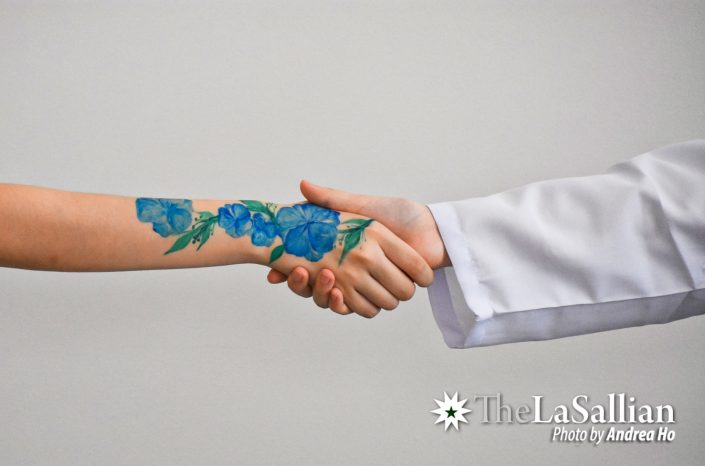Science and art are often framed as two opposing forces: scientists are seekers of fact, while artists are revelers in sensation. Imagine an entomologist and a pop singer. Is there anything that links these two professions at all? While the disciplinary divide may seem insurmountable, there is also plenty to gain in embracing these differences.

A false dichotomy
When discussing the separation between the two disciplines, it is hard not to address the elephant in the room: the decline of the arts. Mind Museum curator Maria Isabel Garcia explains how the art-science schism is not merely the result of a push-and-pull from one to another. It is baked into our culture—one that regards careers in the field of science, technology, engineering, and mathematics (STEM) as the definition of success, the pillars of our economy, and the pride of our hometowns.
This mentality has also led to the collective thought that collegiate degrees and professions related to the arts—including music, literature, fine arts, theater, and film—are “useless” or have lesser “value” compared to those degrees and professions in STEM. Some people also tend to view arts degrees as “hobbies” or “passions” converted into formal curriculum.
Garcia believes that the issue stems from the false idea that certain jobs can be classified as purely “science-informed” or “art-informed.” Although specialization can allow people to be efficient and to cope with an ever-growing body of knowledge, it also pushes them to focus solely on one field, casting every other to the curb. This type of segregation can be observed in schools, where a student’s time is structured, minimizing contact with other disciplines.
This discourse also has another implication: that to choose STEM is to abandon the arts. That is the real rot. “We have the right and the privilege to have both the sense of imagination as well as precision,” asserts Garcia.
With an open mind
Innovation and wonder are not exclusive to either discipline. August Kekulé, the German chemist who discovered the structure of the benzene molecule, drew inspiration from the tale of the ouroboros, the legendary snake that eats its tail. Pablo Picasso, the Spanish painter who pioneered cubism, often used geometric shapes in his work. Cultural landmarks like the pyramids of Giza and the Forbidden City were also tied to a practical purpose. All these examples show how art and science can be deeply intertwined.
Though most people do not join the likes of Isaac Newton or Albert Einstein, there is one thing shared among all human beings: curiosity. Without a doubt, understanding the nature of life requires vast scientific knowledge that would leave many scratching their heads. After years of examining science pedagogy, some educators would agree that in explaining scientific ideas like the theory of relativity to the general public, illustrations and diagrams are paramount for developing understanding.
Dr. Radhika Patnala, a neuroscientist and director at Sci-Illustrate, understands that art can interest individuals in learning something. “Art is really, really good at getting people interested in something because [it] has this innate nature of being visual and creative and explorative,” she posits. Together with science, they form the two greatest human traditions that would be difficult to live without, says Garcia.
In science communication, artists and scientists must collaborate to ensure that the right message gets across. Working in a science museum, Garcia avers, “[The science] has to be correct, clear, and approachable.” To maintain scientific accuracy, Patnala suggests artists deviate from adding personal touches when creating scientific illustrations. Drawings found on most scientific textbooks and journals are integral in understanding scientific concepts, especially when students can create their own illustrations. Artists may also require scientists to simplify complex theories to establish rapport between scientific knowledge and the people perceiving it.
As Einstein suggests how both art and science unravel the universal truths existing today, these two disciplines do not always have to be perceived as separate cultures. They can, in fact, improve each other. Artists may gain a better sense of precision when there is a call for it, while scientists may acquire a deeper insight into the wide possibilities to explore from their work.
Embracing tradition
In reality, society has built individuals to see and hear only at certain frequencies. If one were to have a conversation with someone from the other side of the coin, they gain a clearer picture of what life holds. Cultivating both a scientific and artistic mindset can broaden one’s understanding of the world. The question now lies in whether one is up for this challenge.
The gap between the arts and sciences is not as wide as it seems. Although it may not be apparent, numerous collaborations between scientists and artists have succeeded in creating innovative breakthroughs. Patnala explains how science communication has taken various creative forms, such as scientists explaining their research through singing and dancing in Dance Your PhD.
In conceptualizing one of the country’s renowned science museums, Garcia also mentions how the arts and the sciences cultivate a deeper appreciation for everyday life, “If more collaborations between artists and scientists become a way of life, I think we won’t have time for irrelevant and destructive things.”
In the fast-changing society, the world needs curious minds who dare to provide meaningful interpretations of the environment and it is only through a mix of art and science that this can be done. When given a choice between the two disciplines, it would not hurt to try and do both.
